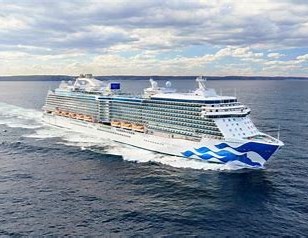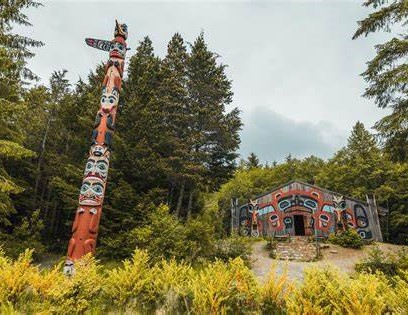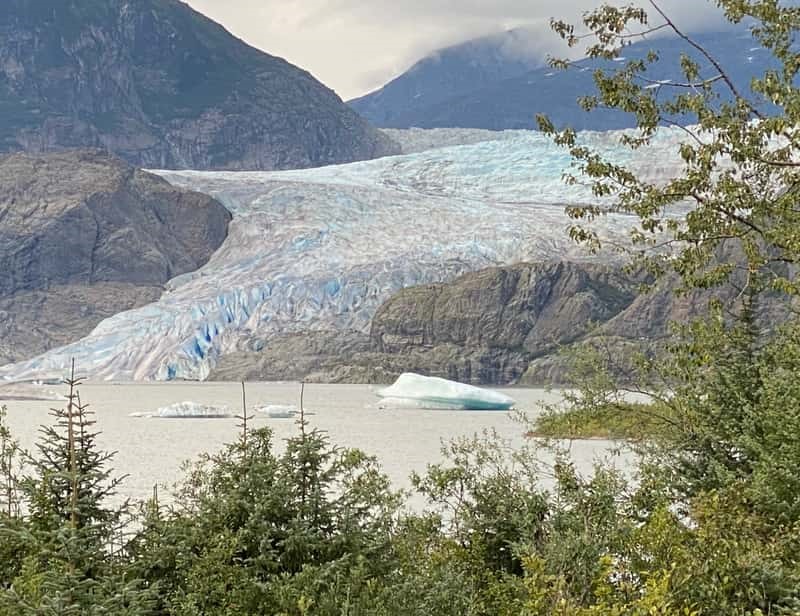
Majestic Princess Cruise to AlaskaSeven NightsSeattle - Ketchikan - Endicott Arm - Juneau -Skagway - Victoria - Seattle August 11-18, 2024 Day 4 Afternoon - Juneau Mendenhall Glacier - Macaulay Fish Hatchery - Salmon Bake |
||||||||||||||||||||||
Juneau, the capital of the U.S. state of Alaska, is located in the Gastineau Channel and the Alaskan panhandle. Juneau was named the capital of Alaska 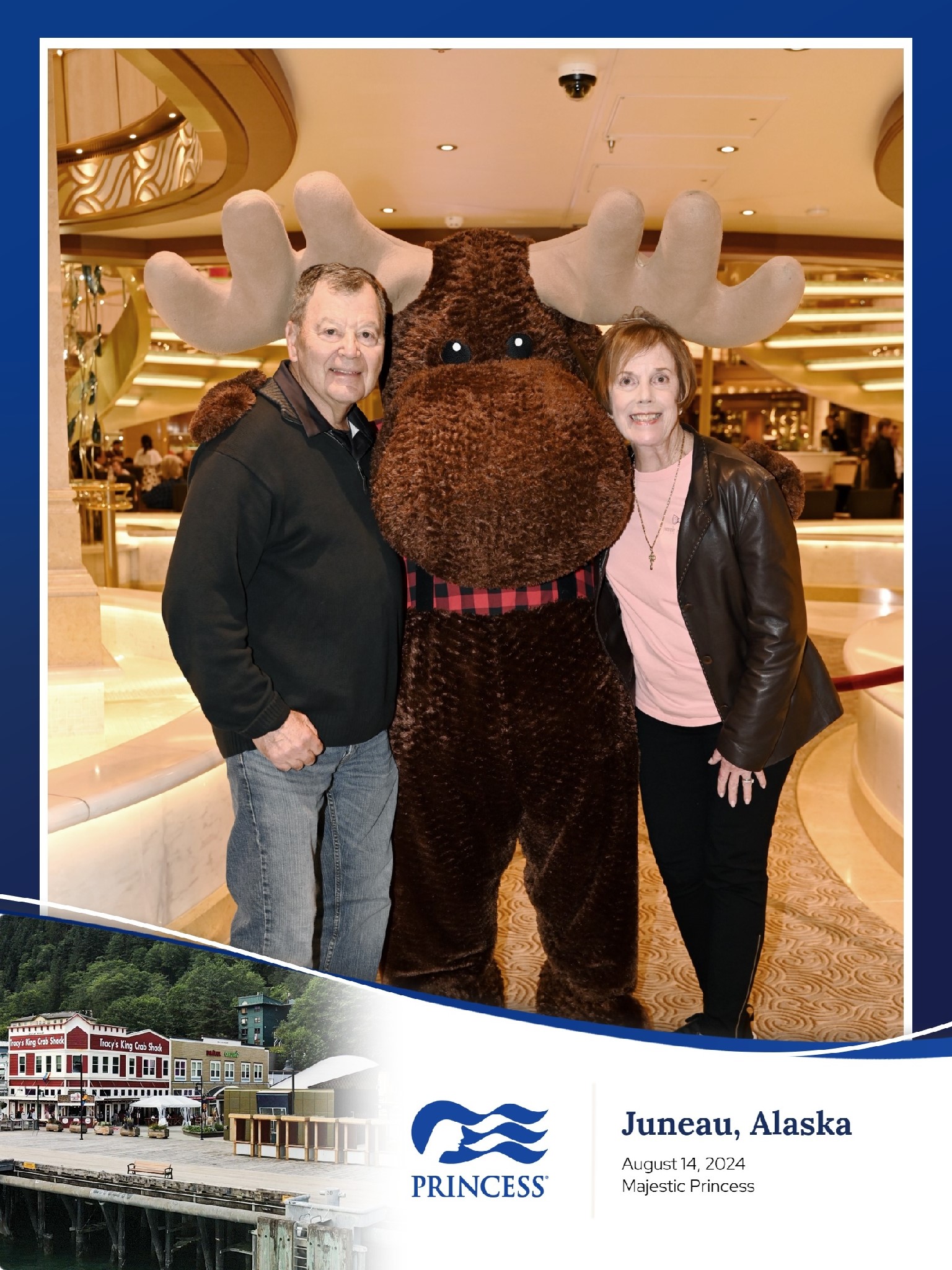 in 1906, when the government of what was then the District of Alaska was moved from Sitka as dictated by the U.S. Congress in 1900. in 1906, when the government of what was then the District of Alaska was moved from Sitka as dictated by the U.S. Congress in 1900.
Downtown Juneau is nestled at the base of Mount Juneau and it is across the channel from Douglas Island. As of the 2020 census, the City and Borough had a population of 32,255, making it the third-most populous city in Alaska after Anchorage and Fairbanks. Juneau experiences a daily influx of 21,000 people or more from visiting cruise ships between the months of May and September. Juneau is unique among U.S. state capitals in that there are no roads connecting the city to the rest of the state or to the contiguous United States. The absence of a road network is due to the extremely rugged terrain surrounding the city. In turn Juneau is a de facto island city in terms of transportation; all goods coming in and out must be transported by plane or boat, in spite of the city's location on the Alaskan mainland. We had a very nice, 3-part excursion in Juneau. Mendenhall Glacier The glacier is about 1.5 miles wide and more than 100 feet high at its terminus. It flows from the southern half of the huge Juneau Icefield, which begins in the Boundary Ranges along the Alaska-Canada border. A relic of the Little Ice Age that lasted until the mid-18th century, the Mendenhall Glacier is an example of a receding glacier (about 100 to 150 feet a year), displaying raw glacier moraine with exposed remnants of a long-buried forest. It is part of Tongass National Forest and is located 13 miles northwest of Juneau. Mendenhall Glacier is about 13.6 miles long and is located in Mendenhall Valley in the southeast area of the U.S. state of Alaska. The glacier and surrounding landscape is protected as part of the 5,815 acres Mendenhall Glacier Recreation Area, a federally designated unit of the Tongass National Forest. The Mendenhall Glacier Visitor Center that is manned by U.S Forest Service Rangers.
Macaulay Salmon Hatchery
Salmon is one of the principal Alaskan industries. To understand the efforts to protect this industry, a trip to this fish hatchery makes absolute sense. This was part of a tour, so checking out its inclusion would be a good idea. The hatchery affords visitors a chance to see a fish ladder in operation. You are also apt to see seals check out their next lunch. Continuing on will include a chance to see the huge tanks where the young fish are allowed to grow. They are then introduced to large netted areas in the river to grow larger before being released. The term “hatchery“ includes the process by which salmon eggs are collected, fertilized, and moved through various size and lifecycle changes until the fish are able to sustain themselves in an open water. We learned that salmon are very territorial, in the sense that after the one to three years it takes for a female salmon to mature and be ready to spawn, the salmon return almost perfectly to the location where they were born. We also learned that a female salmon in nature will produce 2500 eggs, of which about half get to the point where they are fingerlings, and only two of these fingerlings will survive predators and environmental factors to return to their birth and spawning site. We learned that hatchery-born female salmon return to the hatchery and also create 2500 eggs, but because these eggs mature to fingerlings in a series of protected environments, the number of female salmon that return to the hatchery area to spawn is eight times higher than in a natural environment. (Note: The hatchery we visited cited a much higher return rate, though eight times seems really good.) |
||||||||||||||||||||||
|
|
||||||||||||||||||||||
| Gold Creek All-You-Can-Eat Salmon Bake The Gold Creek Salmon Bake has been running for more than 30 years. It offers a feast: Alaskan-caught wild salmon grilling over an open, alder wood fire. The all-you-can-eat meal—served under translucent domes, in case of soft rain includes baked chicken, Gold Rush potatoes, baked beans, wild rice pilaf, fresh salads and corn bread. Beverages included are lemonade, coffee or tea. Blueberry cake for dessert. A tasty end to a very good day. |
||||||||||||||||||||||
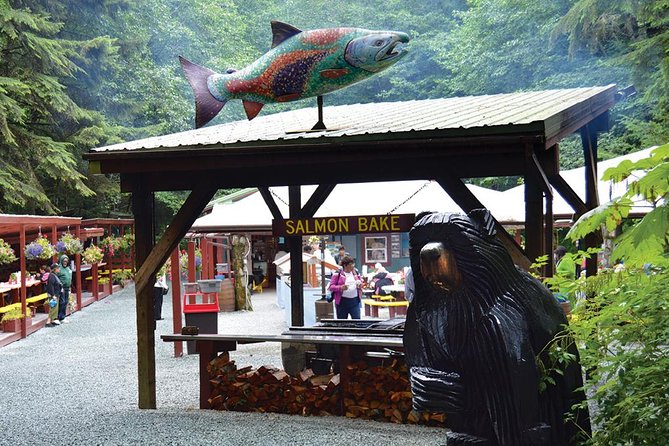
|
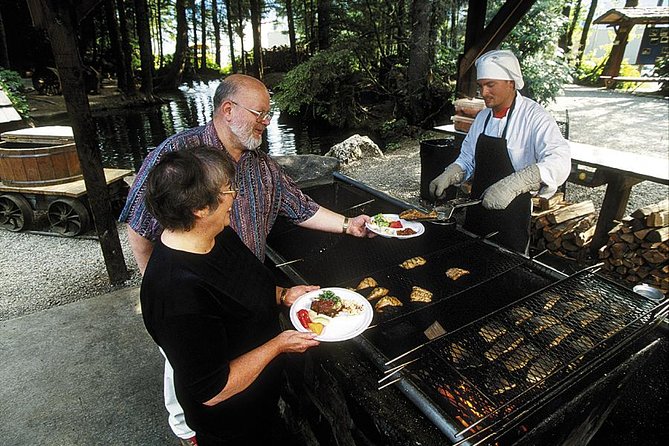
|
|||||||||||||||||||||
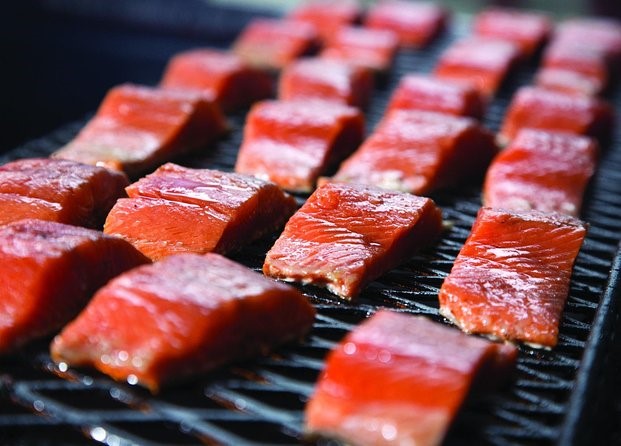
|
||||||||||||||||||||||
|
||||||||||||||||||||||
| Home | ||||||||||||||||||||||



